- Acupuncture for Life606 120th Ave NE, Ste D-202
Bellevue, WA 980051-425-455-8895 
Acupuncture for Life has been recognized as a top Bellevue Acupuncture practice in 2015. Congratulations to the entire team!
Verified by Opencare.com
Newsletter
Newsletter – Summer 2012
Eat more dark chocolate!
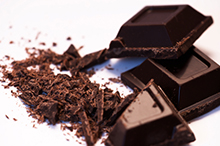 Regular readers of this column probably know that dark chocolate (Theobroma cacao) contains flavonoids that improve blood flow through the arteries. That’s why daily consumption of dark chocolate (not milk chocolate, which has low levels of flavonoids) is associated with reduced risk of heart disease, stroke, and high blood pressure. Dark chocolate also improves blood flow through the arteries of the brain, which has led one team of researchers to find out if this favorite food has any impact on learning and emotions.
Regular readers of this column probably know that dark chocolate (Theobroma cacao) contains flavonoids that improve blood flow through the arteries. That’s why daily consumption of dark chocolate (not milk chocolate, which has low levels of flavonoids) is associated with reduced risk of heart disease, stroke, and high blood pressure. Dark chocolate also improves blood flow through the arteries of the brain, which has led one team of researchers to find out if this favorite food has any impact on learning and emotions.
The Australian-British study, published in the online version of the Journal of Psychopharmacology, looked at 30 healthy college students. On each of three days, these subjects consumed one of three beverages containing different amounts – 994 mg, 520 mg, or 46 mg (the control) – of cocoa flavonoids. Each participant consumed each beverage with three-day washout period between drinks. Before and after consumption of each beverage, subjects took standard psychological tests that measured anxiety, mood, and cognitive function. Cocoa flavonoids had no effect on anxiety, but the two higher doses significantly elevated mood and improved cognitive processing speed.
The amounts of cocoa flavonoids found helpful are equivalent to a few ounces of dark chocolate. So, if you’re looking for another excuse to indulge, here it is: Dark chocolate makes you happy – and perhaps even smart!
Turmeric and rose hips for arthritis
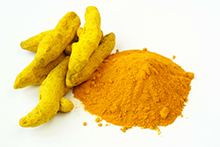 Mounting evidence shows that both rose hips (Rosa canina) and curcumin, the yellow pigment in the Indian spice turmeric (Curcuma longa), have anti-inflammatory action that helps treat the joint pain and stiffness of osteoarthritis, the leading cause of chronic pain.
Mounting evidence shows that both rose hips (Rosa canina) and curcumin, the yellow pigment in the Indian spice turmeric (Curcuma longa), have anti-inflammatory action that helps treat the joint pain and stiffness of osteoarthritis, the leading cause of chronic pain.
The latest report on curcumin comes from Greek researchers who have 50 people with arthritic knees assessment of joint pain and a treadmill test to see how far the subjects could walk before knee pain become severe. The researchers then gave the participants curcumin (the equivalent of 200 mg/ day of powdered herb).
After three months, the participants retook the tests. The survey also showed a significant decrease in knee pain, and the distance the subjects were able to walk pain-free increased from 76 to 332 meters, a very sizeable difference. In addition, the curcumin treatment allowed participants to reduce mainstream arthritic medication, which reduced their stomach distress and improved their quality of life.
Meanwhile, Scandinavian scientists decided to conduct a metaanalysis of previous research focusing on rose hips and their ability of reduce arthritis pain. The team identified the three most rigorous studies, which involved 306 people with osteoarthritis of the knee, average age of 66, who took either a placebo or rose-hip powder for at least three months. Based on standard before-and-after tests of knee pain, rose hips seem to have reduced knee pain substantially (66 present). In addition, while taking the herb, participants were able to reduce the amount of medication they took.
If you have osteoarthritis, you probably take a nonsteroidal anti-inflammatory drug (NSAID). There’s no question that NSAIDs relieve joint pain, but they can also cause severe stomach distress. Based on these studies, you might give curcumin and rose hips a try to relieve mild to moderate osteoarthritis pain. For more severe arthritis pain, the two herbs may allow you to at least reduce your NSAID dose. Talk to you doctor about it.
Bacopa and memory
Native to India, bacopa (Bacopa monnieri), a spreading, marsh dwelling groundcover with delicate white flowers, is now an ornamental that grows all aover the temperate world. Bacopa also has a long history in Ayurvedic medicine as a mind stimulant and memory enhancer, and several studies have backed this traditional use.
The latest report on bacopa, comes from Australian researchers, who recruited 98 older adults, average age of 65, who showed no symptoms of dementia and depression, and who consumed less than four alcoholic drinks per day. Participants took standard cognitive function and memory tests, and then received either a placebo or bacopa (300 mg /day). After 12 weeks, the bacopa group showed significantly improved memory.
This study, published in the Journal of Alternative and Complementary Medicine, confirms bacopa’s traditional use an a memory herb, and several earlier studies of its effectiveness. Bacopa is not among the most popular herbal medicines, so small health-food stores may not stock it. Look for it in larger stores or online from a reputable source.
Protect Your Aging Brain
with “Yummy” Berries.
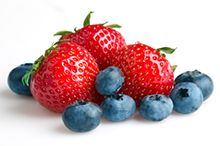 Berries in our breakfast cereal or yogurt topping may be doing more than merely adding fruity flavor to our day. A “bunch” of new research suggests that blueberries, strawberries, grapes and other berry fruits could help protect our brain from decline with aging.
Berries in our breakfast cereal or yogurt topping may be doing more than merely adding fruity flavor to our day. A “bunch” of new research suggests that blueberries, strawberries, grapes and other berry fruits could help protect our brain from decline with aging.
In addition to their now well-known antioxidant effects, dietary supplementation with berry fruits also has direct effects on the brain. Intake of these fruits may help to prevent age-related neurodegeneration and resulting changes in cognitive and motor function.
Some of the latest research focuses on beneficial effects of berry fruits on the ways that neurons in the brain communicate. By boosting the brain’s signaling functions, berries may prevent damaging inflammation in the brain and protect cognition and motor control.
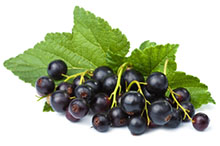 At least some of berries’ protective power appears to derive from antioxidant flavonoid compounds called anthocyanins, which give the fruits their vivid red, purple and blue colors. These anthocyanins are found in berry fruits including blueberries, strawberries, raspberries, blackberries, bilberries, huckleberries and cranberries, as well as grapes and currants.(Journal of Agricultural and Food Chemistry, online first)
At least some of berries’ protective power appears to derive from antioxidant flavonoid compounds called anthocyanins, which give the fruits their vivid red, purple and blue colors. These anthocyanins are found in berry fruits including blueberries, strawberries, raspberries, blackberries, bilberries, huckleberries and cranberries, as well as grapes and currants.(Journal of Agricultural and Food Chemistry, online first)
The case for berries’ brain benefits was also recently bolstered by a study published in Annals of Neurology, scientists found that women who consumed two or more half-cap servings of strawberries or one or more half-cap of blueberries per week saw slower mental decline- equivalent to up to two and a half years of delayed cognitive aging. Intakes of anthocyanins and total flavonoids were also associated with slower cognitive aging. (Annals of Neurology,online first)
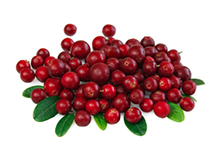 Berries may also be good for our blood vessels, according to laboratory tests in Finland. Researchers fed lingonberry, cranberry and blackcurrant juice to rats specially bred to develop high blood pressure. All three juices were associated with reductions in compounds linked to inflammation. Lingonberry juice was also linked to significant improvements in biomarkers associated with damage to cells thougt to contribute to atherosclerosis. The positive effects can’t be linked to a single phenolic compound in the juices, scientists noted, although several such antioxidant compounds have been shown to have anti-inflammatory benefits. Overall, researchers concluded that “lingonberry juice appears to be the most effective of the tested juices”(Journal of Functional Foods, April 2012)
Berries may also be good for our blood vessels, according to laboratory tests in Finland. Researchers fed lingonberry, cranberry and blackcurrant juice to rats specially bred to develop high blood pressure. All three juices were associated with reductions in compounds linked to inflammation. Lingonberry juice was also linked to significant improvements in biomarkers associated with damage to cells thougt to contribute to atherosclerosis. The positive effects can’t be linked to a single phenolic compound in the juices, scientists noted, although several such antioxidant compounds have been shown to have anti-inflammatory benefits. Overall, researchers concluded that “lingonberry juice appears to be the most effective of the tested juices”(Journal of Functional Foods, April 2012)
Newsletter – Spring 2012
Herbal remedies for weight management
Many herbs provide wonderful support to weight loss by safely boosting metabolism, curbing cravings for unhealthy snacks, and giving the energy to keep up the exercise routine. On their own, herbs won’t shed oodles of pounds, but with a good weight-loss regiment, herbs make it easier to lose weight, and that’s half the battle.
It’s helpful to understand that weight-loss plans are not ‘one size fits all’. Neither are the herbs that can assist us. We each have our own challenges, body type, and constitution. We may also have other health issues that interfere with our ability to lose weight or that cause contraindications and interactions with certain botanicals. Don’t try to do and take everything listed in this article. Listen to your body to figure out what works for you. (If you have other serious health concerns, take pharmaceutical drugs, or simply would like a hand in the process, talk with knowledgeable health practitioners who guide you.)
Boost Metabolism
These plants boost our basal metabolism – the rate at which we burn energy – by chipping away at stored “energy” or fat.
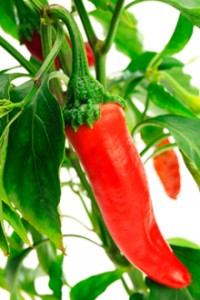 CAYENNE (Capsicum annuum), and related hot peppers, appear to enhance metabolism and curb appetite. Cayenne is generally safe, so don’t be afraid to spice it up, but it can aggravate heartburn, ulcers, and gastritis. Studied disagree as to whether high doses increase your risk of stomach cancer.
CAYENNE (Capsicum annuum), and related hot peppers, appear to enhance metabolism and curb appetite. Cayenne is generally safe, so don’t be afraid to spice it up, but it can aggravate heartburn, ulcers, and gastritis. Studied disagree as to whether high doses increase your risk of stomach cancer.
GREEN TEA (Camellia sinensis) is revered throughout Asia as a delicious, healthy beverage. Promising clinical, animal, and lab studies support its use for attaining and maintaining a healthy weight. In one study of obese patients, those who took green tea extract while dieting lost three times more pounds and reduced their BMI more significantly compared to those who just dieted.
If you opt for green tea extract pills instead of the beverage, monitor your liver enzyme levels. Some case reports of liver toxicity with these extracts (which often contain other ingredients) have popped up, but the common tea form has a long history of safety.
YERBA MATE (Ilex paraguariensis) is a popular beverage tea of South America. The earthy, sometimes smoky tea is a rich source of antioxidants and modest amounts of caffeine. Traditionally it was used as a health tonic, and animal studies suggest that mate helps fight obesity by boosting metabolism, curbing appetite, lowering glucose levels, triglycerides, and LDL cholesterol, and inhibiting genes that aggravate obesity. Mate tea makes a nice coffee alternative. It’s important for us to maintain solid energy levels as we diet and exercise. Low energy levels can also make us seek sugar and other calorie-laden foods to give us a quick mental boost.
RHODIOLA (Rhodiola rosea) originated in Siberia, where it’s used for mental and physical energy, as well as longevity. Moderate doses are consumed on an ongoing basis to keep energy levels up, and high doses are taken short term for greater support. Over the last decade, rhodiola has become more available and popular in America as an energy tonic. Experts believe that it acts as an adaptogen, improving our overall resistance to stress, and that it helps our body produce more ATP (energy for the body). Clinical research generally supports its use for boosting physical performance during exercise and athletics. The herb is somewhat stimulative, but it doesn’t contain caffeine and has a good safety record.
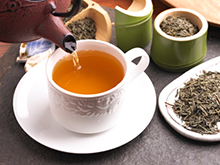 PEPPERMINT (Mentha piperita), inhaled as an essential oil, perks up our energy levels by increasing cognitive activity. In one study of athletes on the treadmill, participants reported better workload and performance levels when they inhaled peppermint versus jasmine. Keep a bottle by your desk or in your purse for a quick whiff. Or use a diffuser to scent your office or workout space for longer periods of time.
PEPPERMINT (Mentha piperita), inhaled as an essential oil, perks up our energy levels by increasing cognitive activity. In one study of athletes on the treadmill, participants reported better workload and performance levels when they inhaled peppermint versus jasmine. Keep a bottle by your desk or in your purse for a quick whiff. Or use a diffuser to scent your office or workout space for longer periods of time.
GREEN TEA & YERBA MATE contain modest amounts of caffeine and ample antioxidants to give us a slight boost during the day or before a workout.
Curb Cravings
If you’re having a hard time passing up unhealthy treats, herbs can help with it. Remember, though, that not everyone eats because they’re hungry. If you eat because you’re bored or stressed, some appetite suppressants may not work as well.
HOLY BASIL (Ocimum sanctum, O. Tenuiflorum), or tulsi, is treasured in India and has recently gained popularity in America. Ayurvedic medicine uses holy basil for a wide variety of health concerns, including colds and flu, protection from radiation, and for balancing the doshas (Ayurvedic constitutional types). Here in the United States, it is known for its ability to modulate levels of the stress hormone cortisol to relieve tension, improve mental focus, and balance blood sugar. According to the interplay of these activities, holy basil does a nice job curbing cravings for sugar.
HOODIA (Hoodia gordonii), a cactus-like plant from Africa, made a quite a splash on the ‘miracle pill’ scene a few years ago, thanks to its incredible ability to suppress the appetite. The native people of the Kalahari desert have consumed hoodia for thousands of years to decrease their desire for food and water and to enhance their energy levels. If you’re thinking about buying hoodia, make sure you get real hoodia (plant is low-growing and market is loaded with fakes).
FIBER & GLUCOMANNAN reduce hunger by adding bulk to the digestive system to help absorb food more slowly, stabilize blood sugar, and make people feel fuller. Certain sources of soluble fiber appear to be most effective: apples, pears, psyllium and glucomannan, the soluble fiber extracted from konjac root (Amorphophallus konjac). This last one made headlines in health magazines for its ability to improve weight loss and reduce food consumption, blood sugar, and cholesterol. Studies have found that 1 to 4 grams of glucomannan taken before meals significantly enhanced weight loss. But studies have found that eating an apple or pear before meals also significantly improves weight loss and reduces the amount of calories consumed throughout the day.
Blood Sugar Issues
Over-consumption of sugar is at the core of most of America’s weight problem.
CHROMIUM mineral levels tend to be deficient in individuals with insulin resistance and type 2 diabetes. A high carbohydrate diet is not only low in chromium; it also directly reduces chromium levels in the body. Studies have found that chromium supplementation can help correct the body’s metabolism, blood sugar, and cholesterol levels. Brewer’s yeast (not nutritional yeast) is our richest food source of chromium.
CINNAMON (Cinnamomum spp), a familiar baking spice, appears to reduce blood sugar and improve the cell’s sensitivity to insulin, which can help correct metabolism. Just a teaspoon to a tablespoon of powdered cinnamon seems to help. For a delicious, sweet cinnamon tea, simmer one to three sticks of cinnamon or a teaspoon to a tablespoon of cinnamon “chips” in eight ounces of water for 20 minutes. This has the added benefit of offering something sweet for your palate while actually lowering your blood sugar. Cinnamon is best consumed with food; taking it on an empty stomach can cause hypoglycemia.
HOLY BASIL, as mentioned, also helps improve our sugar balance.
Low Thyroid
Both subclinical and acute hypothyroid conditions are on the rise, particularly in women. Several factors may be at play, not all of which are understood. Many holistic practitioners believe that stress and poor diet (including iodine deficiency) are to blame. Poor thyroid function can cause weight gain, exhaustion, depression, poor mental focus, increased pain, weak hair, skin, and nails, and goiter (enlarged thyroid). Simple lab tests are usually necessary to diagnose a thyroid problem. Be aware that suggested ranges of thyroid hormones have changed, meaning that more people have subacute thyroid problems than previously thought. Unfortunately, not all labs and practitioners are on board with the new standards.
ASHWAGANDHA (Withania somnifera) shows promise as one of the few herbs that enhance thyroid function. Animal studies suggest that ashwaganha increases levels of the thyroid hormone T4 and possible T3. The root is traditionally used to enhance energy and vitality, support the nervous system, and reduce pain.
IODINE is necessary for adequate thyroid function. If you have low thyroid function and your iodine levels are deficient, you may want to increase your dietary levels of this mineral through a multivitamin (not all contain iodine), iodized salt, and seaweed, including bladderwrack (Fucus vesiculosus).
Avoiding goitrogens, or food that may inhibit thyroid function by reducing iodine levels, offers help for many with thyroid problems. Soy, in its many forms, is a common aggravator. Broccoli-family plants can also slow down the thyroid, particularly if they’re not cooked. Caffeine may also reduce thyroid function. Some foods, such as coconut, avocado, and saturated fat, seem to enhance thyroid function.
Chronic Stress
Chronic stress is connected with poor blood sugar metabolism, thyroid function, and many other factors that impede our ability to maintain a healthy diet and lose weight. When we’re under stress, our body throws sugar into our bloodstream to give us energy. Long-term stress can lead to high blood sugar levels, even if our diets aren’t particularly high in carbohydrate. This, in turn, leads to poor metabolism. Our stress hormones can also interfere with other hormones, including thyroid and reproductive hormones. Our sleep becomes less restful, which further aggravated the body’s balance.
ADAPTOGENIC HERBS appear to modulate stress hormones and improve our resistance to tension. As a result, they improve our energy levels and offer other benefits, including improved immunity. That is why most herbalists think of adaptogens as our superheroes.
Many of the herbs already discussed, such as holy basil, rhodiola, and ashwagandha, are believed to have adaptogen properties. Others include eleuthero (Eleutherococcus sentiocosus), ginseng (Panax spp), codonopsis (Codonopsis spp), and gotu kola (Centella asiatica). Some are more relaxing (holy basil, gotu kola, ashwagandha), while others are more stimulating (rhodiola, ginseng, eleuthero, codonopsis). They all have their specialties, and it is better to use them in combination or singularly, depending on a person’s needs and constitution.
SEROTONIN is neurotransmitter associated with mood health. Low serotonin levels seem to cause and aggravate depression, anxiety, and insomnia. Supplements like L-tryptophan, 5-HTP, and St. John’s wort (Hypericum perforatum) may enhance our serotonin balance. Fish oil may also help improve mood. Use caution with St. John’s wort if you take pharmaceutical drugs. Consult a practitioner before taking any of these if you’re on antidepressant drugs.
LAVENDER (Lavandula spp) essential oil is well-known for its relaxing properties when inhaled. Clinical research supports its reputation for calming the nervous system, improving mood, and enhancing sleepiness. Other essential oils, such as citrus, seem to have more uplifting effects. Use lavender as you would peppermint essential oil described above.
Women’s Health Concerns and Acupuncture.
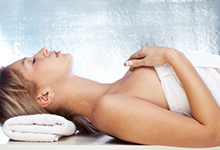 The biggest threats to women’s health are often preventable. Oriental medicine has always addressed the special needs of women throughout their lives and many health issues women face respond extremely well to acupuncture treatments. Taking small steps to improve your health can make a difference.
The biggest threats to women’s health are often preventable. Oriental medicine has always addressed the special needs of women throughout their lives and many health issues women face respond extremely well to acupuncture treatments. Taking small steps to improve your health can make a difference.
The top health concerns affecting women and how acupuncture can help are:
Cardiovascular Disease
As the number one threat to women’s health, cardiovascular disease is not just a man’s disease. In women, the condition is responsible for about 29% of deaths, reports the CDC. Although more men die of heart disease than women, females tend to be under diagnosed, often to the point that it’s too late to help them once the condition is discovered. By integrating acupuncture and Oriental medicine into your heart healthy lifestyle, you can reduce your risk of cardiovascular disease by as much as eighty percent.
Steps to prevention include managing high blood pressure and cholesterol, quitting smoking, eating healthy, maintaining a healthy weight, physical activity, reducing stress and improved sleep – all of which can be helped with acupuncture and Oriental medicine. Acupuncture has been found to be particularly helpful in lowering blood pressure. By applying acupuncture needles at specific sites along the wrist, inside the forearm or in the leg, researchers have been able to stimulate the release of opiods, which decreases the heart’s activity and its need for oxygen. This, in turn, lowers blood pressure.
Cancer
There have been many advances in the early detection and treatment of cancer. While the standard medical care for cancer is effective, the treatments are aggressive and cause numerous unwanted side effects as well as a lowered immune system. The three most common cancers among women are breast, lung and colorectal cancer. While breast cancer is the most common cancer in women it is second in the leading cause of cancer death. Early detection screenings and recommended self examinations should be taken seriously.
Acupuncture has received much attention as an adjunctive therapy in cancer treatments for its use in pain relief, reducing side effects, accelerating recovery and improving overall quality of life.
From a preventive approach Oriental medicine works to restore imbalances in the system with a variety of treatment modalities including acupuncture, herbal therapy, tui na, qi gong in addition to food, exercise and lifestyle suggestions. Seasonal acupuncture treatments just four times a year serve to tonify the inner organ systems and correct minor annoyances before they become serious problems.
Osteoporosis
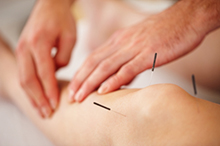 Characterized by a decrease in bone mass and an increased likelihood of fractures osteoporosis is not simply a calcium deficiency. As a complex living tissue, bone is made of many different components and is influenced by many variables including the body’s use of calcium from the bone to balance pH levels in the blood. Osteoporosis threatens 44 million Americans, of which 68% are women, reports the National Osteoporosis Foundation.
Characterized by a decrease in bone mass and an increased likelihood of fractures osteoporosis is not simply a calcium deficiency. As a complex living tissue, bone is made of many different components and is influenced by many variables including the body’s use of calcium from the bone to balance pH levels in the blood. Osteoporosis threatens 44 million Americans, of which 68% are women, reports the National Osteoporosis Foundation.
“Osteoporosis is largely preventable,” says Mark. “The behaviors that women develop in their childhood, in their adolescence, and in their early adult years really play a significant role in the development of the disease.” That’s because bodies build up most of bone mass until age 30. Then new bone stops forming and the focus switches to the maintenance of old bone.
Acupuncture and Oriental medicine coupled with a healthy lifestyle and regular exercise, have much to offer in improving the quality of life for those who suffer from bone and joint problems.
Depression
Depressive disorders affect 10%-25% of women at some point in their lives. The body’s immune system is compromised and symptoms reduce functioning, impair work performance and social relationships. Common symptoms of depressive disorders include: a decreased interest in most activities, insomnia, fatigue, and feeling empty and worthless. At its worst, hopelessness sets in and suicide becomes a desperate option for approximately 15% of people who suffer from severe depressive disorders.
Oriental medicine does not view people as a collection of segmented parts to be treated independently but rather addresses the link between the body, spirit and mind. The goal of Oriental medicine is to bring all the human systems into a healthy balance, insuring that both the mind and body feel well and when used in conjunction with psychotherapy acupuncture has a positive and holistic effect on depressed patients. If you suffer from depression, consider acupuncture therapy in conjunction with your treatment plan to regain peace of mind, regulate your immune system and stay healthy.
Autoimmune Diseases
Autoimmune diseases are a group of disorders in which the immune system attacks the body and destroys or alters tissues. There are more than 80 serious chronic illnesses in this category, including lupus, multiple sclerosis, and type 1 diabetes.
According to the American Autoimmune Related Diseases Association (AARDA), about 75% of autoimmune diseases occur in women. Individually, each disease appears uncommon with the exception of diabetes, thyroid disease, and lupus however as a group, the disorders make up the fourth-largest cause of disability among American women.
Due to the complexity of treating autoimmune disorders, integrative medicine solutions have received much attention as successful therapies in their treatment. Acupuncture and Oriental medicine are specifically noted for use in pain relief, regulating the immune system, managing symptoms and improving overall quality of life.
Menopause and Gynecological Health
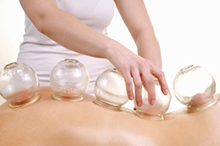 Gynecological conditions including Premenstrual Syndrome (PMS), fibroids, endometriosis, and infertility along with menopause are some of the most successfully treated problems by acupuncture and Oriental medicine. Oriental medicine has long recognized that health and vitality can be sustained over a woman’s lifetime by restoring balance within the body and supporting the natural production of essential hormones.
Gynecological conditions including Premenstrual Syndrome (PMS), fibroids, endometriosis, and infertility along with menopause are some of the most successfully treated problems by acupuncture and Oriental medicine. Oriental medicine has long recognized that health and vitality can be sustained over a woman’s lifetime by restoring balance within the body and supporting the natural production of essential hormones.
Menopause is a transitional period marking the cessation of ovulation in a woman’s body. Symptoms vary from mild to severe, and are brought on as our bodies try to adapt to decreasing amounts of estrogen. Symptoms can include hot flashes, night sweats, insomnia, fatigue, mood swings, memory loss, dryness, headaches, joint pain, and weight gain. Menopause patients are encouraged to maintain a healthy weight, stabilize blood sugar, and eliminate stress, tension and anxiety or learn new techniques to cope with them to diminish the effects they have.
Oriental medicine does not recognize menopause as one particular syndrome and aims to treat the specific symptoms that are unique to each individual using a variety of techniques such as acupuncture, herbs, bodywork, lifestyle/dietary recommendations and energetic exercises to restore imbalances found in the body. Therefore, if 10 women are treated each will receive a unique, customized treatment with different acupuncture points, different herbs and different lifestyle and diet recommendations.
With support from Acupuncture and Oriental Medicine along with small changes in lifestyle and diet, menopause can be a time of a revival of vital energy and an opportunity for personal growth.
To learn more about how acupuncture and Oriental medicine can improve your health and wellbeing call for a consultation today!
Newsletter #9. Winter 2009-2010
10 Best winter drinks.
Beat winter’s cold bite and warm up with these cozy brews.
 What better way to celebrate the colder, restful months than with a hot beverage? Whether you’re looking to cozy up to the fire with a mug of herbal tea or entertain guests with spiced cider, there are dozens of recipes to choose from. For those special occasions with family and friends, reach for ancient recipes like mead or glogg to toast the season. You can enhance a bottle of wine with rich, earthy spices like cinnamon, cloves, star anise, or licorice root. For a warm punch that pleases a crowd, mix wine with liquors like brandy, Schnapps, Cointreau, Grand Marnier, or Galliano. Then jazz it up with stevia, fennel, basil, or woodruff. Most of the recipes found here are non-alcoholic, but suggest a liquor if you want to add a little “spirit.” Double the recipes for a larger crowd and keep the brews warm on the stove or in a crock pot. Garnish with pretty herbal flowers like chamomile, lavender, pineapple sage, and mint. Or use edible stir sticks like licorice root, chicory, cinnamon, or rosemary bark.
What better way to celebrate the colder, restful months than with a hot beverage? Whether you’re looking to cozy up to the fire with a mug of herbal tea or entertain guests with spiced cider, there are dozens of recipes to choose from. For those special occasions with family and friends, reach for ancient recipes like mead or glogg to toast the season. You can enhance a bottle of wine with rich, earthy spices like cinnamon, cloves, star anise, or licorice root. For a warm punch that pleases a crowd, mix wine with liquors like brandy, Schnapps, Cointreau, Grand Marnier, or Galliano. Then jazz it up with stevia, fennel, basil, or woodruff. Most of the recipes found here are non-alcoholic, but suggest a liquor if you want to add a little “spirit.” Double the recipes for a larger crowd and keep the brews warm on the stove or in a crock pot. Garnish with pretty herbal flowers like chamomile, lavender, pineapple sage, and mint. Or use edible stir sticks like licorice root, chicory, cinnamon, or rosemary bark.
Peppermint Patty.
 The Aztecs considered chocolate a food of the gods. Montezuma, the Aztec emperor, purportedly indulged in the drink known as cacahuatl more than 50 times a day. Often, chiles, cinnamon, or anise seeds were added to cut the bitterness of this cocoa-based beverage. It wasn’t until Cortez brought the recipe back to Spain that sugar was included. The addition of peppermint ads a refreshing bite and promotes circulation.
The Aztecs considered chocolate a food of the gods. Montezuma, the Aztec emperor, purportedly indulged in the drink known as cacahuatl more than 50 times a day. Often, chiles, cinnamon, or anise seeds were added to cut the bitterness of this cocoa-based beverage. It wasn’t until Cortez brought the recipe back to Spain that sugar was included. The addition of peppermint ads a refreshing bite and promotes circulation.
1 Tbls dried peppermint in a teaball or cheesecloth
1/3 cup hot water
4 cups (1 qt) milk
½ cup sugar
¼ cup cocoa
Suggested liquor: peppermint Schnapps
In a medium saucepan, combine peppermint and water. Simmer over medium heat until mixture comes to a boil; stir for two minutes. Remove peppermint bundle. Add sugar and cocoa, stirring constantly, and continue boiling. Remove from heat, add milk, and stir. Serves 5.
Hot Buttered Cider.
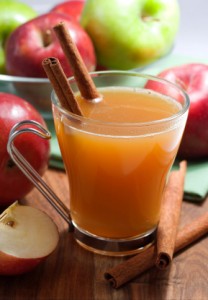 Originally, apple cider was a fermented alcoholic beverage manufactured across the world in countries like Spain, France, and England. Early American settlers began making the drink almost as soon as they arrived and it was quite popular in most households. In pagan cultures, the apple was symbol of immortality and used in many love spells. (For a simple love charm, cut an apple in half, remove the seeds, and share it with the one you adore. Then bury the seeds beneath a full moon for a long and prosperous relationship!)
Originally, apple cider was a fermented alcoholic beverage manufactured across the world in countries like Spain, France, and England. Early American settlers began making the drink almost as soon as they arrived and it was quite popular in most households. In pagan cultures, the apple was symbol of immortality and used in many love spells. (For a simple love charm, cut an apple in half, remove the seeds, and share it with the one you adore. Then bury the seeds beneath a full moon for a long and prosperous relationship!)
1 gallon of apple cider
6 whole allspice berries
Half of a nutmeg seed
3 cinnamon sticks
8 cloves
4 pats of butter
Chamomile flowers
Suggested liquor: spiced rum
To a large pot, add cider and spices Simmer for 20 minutes. Strain into a pretty punch bowl and dot with butter. Garnish with chamomile flowers and serve warm. Serves 12.
Warm Mead.
Thought to have originated in Ireland, mead dates back to ancient times. Brides and grooms toasted with the drink for a month after their weeding. Traditional mead is an ancient fermented beverage made from honey, water, yeast, and spices. The original process is very complicated; this is a simpler, heated version.
1 bottle of Chardonnay
6 springs of sweet woodruff, washed and dried
1 vanilla bean
¼ cup honey
In a medium saucepan, combine wine, woodruff, vanilla, and honey. Gently heat until honey dissolves. Remove woodruff and vanilla and serve in goblets. Serves 4.
Rosemary Coffee.
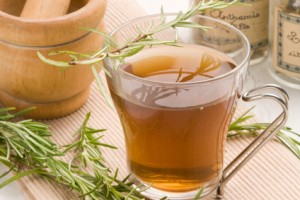 This recipe might seem strange, but if you love rosemary, you’ll enjoy it. And because rosemary stimulates the mind, this caffeinated drink provides a double pick-me-up.
This recipe might seem strange, but if you love rosemary, you’ll enjoy it. And because rosemary stimulates the mind, this caffeinated drink provides a double pick-me-up.
3/4 cup fresh coffee beans or ground coffee
1 sprig rosemary
Water
Grind coffee beans with rosemary sprig and brew. If you don’t have a grinder, chop the sprig first; then add it to the coffee basket before brewing. Serves 10.
Hot Toddy.
It’s great for colds and sore throats. The honey is soothing, while the lemon detoxifies. Add the whiskey to help you sleep.
1 teabag of orange pekoe, green, or black tea
1 cup of water
1 tsp honey
1 wedge of lemon
Suggested liquor: whiskey
Brew tea in water. Remove teabag and pour into a mug and add honey and lemon. Serves 1.
Winter’s Nap Tea.
This tea has all the makings to send you to dreamland. Lavender soothes and relaxes, while valerian and chamomile promote sleepiness.
1 Tbls loose-leaf chamomile tea
1 Tbls dried lavender buds
1 Tbls dried valerian
Water
Add all ingredients to a coffee basket and brew with water. Or heat in a saucepan and strain before serving. Add honey if desired. Serves 6.
After-Dinner Tea.
After a big meal, sipping on this tea can help aid digestion and, as a bonus, it tastes great!
1 licorice root, grated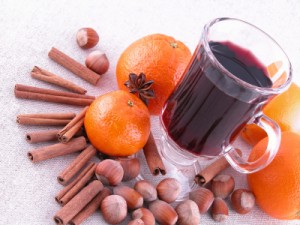
1 star anise
1 Tbls dried orange peel
Small handful anise seeds
Water
Muddle all ingredients together, and place in a tea ball or muslin bag. Gently heat in a medium saucepan filled with water. Remove herbs and spice and pour the liquid into mugs. Serves 2.
Drink to Your Health.
During the long, chilly winter months, our bodies need all the help they can get to fight infection. Colds, viruses, and the flu lurk at the door and a simple handshake can lay one out for weeks. To build up the immune system and stave off bugs that run rampant in winter, try incorporating herbs like rosemary, sage, and lemon balm to your morning tea or coffee. All three of these herbs promote longevity and aid in strengthening the body’s defenses. Add them directly to the basket of your coffee pot for full infusion. Remember to gently crush the herbs in your hands first to release all of their essential oils. If you’re lucky enough to have a coffee grinder, that works even better. Simply add the sprigs or dried leaves to the beans and grind away. Then dress the drink as you normally would.
Don’t forget to consume fresh juices for more immunity-building in the darker months. Reach for 100-percent juice varieties of blueberry, orange, pomegranate, and goji, which may ward off everything from common cold to cancer. Juices are also a great option for flavoring tea, coffee, and punch. For instance, you might add a shot of noni juice to coffee every morning for an antioxidant boost. Noni fruit is derived from trees found across the Polynesian islands and shows promise in fighting fatigue and combating aging.
Swedish Glögg.
A mulled wine that originated in the Scandinavian countries, glogg is enjoyed around the holidays and includes warm spices, nuts, and dried fruit. While many recipes call for a sweet wine like port or even sherry, you may find that the drier varieties better complement these ingredients. You can substitute the brandy for a fruity Schnapps like peach.
1 whole orange
Handful of cloves
1 bottle dry red wine
1 cub blackberry brandy
6 cinnamon sticks
1 handful raisins
1 handful slivered almonds
Wash the orange and pierce it with the cloves. Add all ingredients to a large pot. Gently simmer until warm. Do not strain. Pour into a crock pot to keep warm. Serve in mugs. Serves 6.
N’Orleans-style Latte.
Chicory has been used for centuries as a coffee substitute. Its earthy flavor adds a rich, smokey taste to the hot beverage.
¼ cup coffee beans, or ground coffee
1 chicory root
Milk
Stevia powder
Grind coffee beans with chicory root, or grate root and add to the coffee basket. Brew with water. Add milk and stevia to taste. Serves 10.
Morning Power Tonic.
There has been much chatter in the new lately regarding “power fruits.” Pomegranate, blueberry, goji, and acai berries are said to do everything from boost immunity to combat chronic illnesses. Packed with antioxidants, vitamins, phytochemicals, and anthocyanins, these fruits are the new wave of healthy eating. But age-old lemon balm here is also known to promote longevity. In A Modern Herbal, author Mrs. M. Grieve claims that John Hussey of Sydenham, who lived to the age of 116, drank lemon balm tea daily for 50 years!
1 cup purified water
2 Tbls dried lemon balm
¼ cub cranberry juice
¼ cup pomegranate juice
¼ cup blueberry juice
¼ cup acai juice
¼ cup goji juice
Add lemon balm to a teaball and gently simmer in water for 10 minutes. Remove lemon balm and add juices, simmering for 5 more minutes. Enjoy at the start of your day for an energy boost. Serves 2.
By: Barbara Annino.
Natural Remedies. Honey.
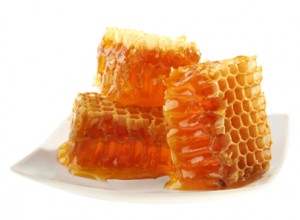 The name of this familiar and time-tested household remedy comes from ancient Hebrew and means “enchant.” Long used as a culinary sweetener, honey is valued for its many healing properties as well. Treatment with honey is referred to as apitherapy and includes replenishing energy, enhancing physical stamina and strengthening those weakened by illness or stress. Honey can also help calm the mind and promote rejuvenating sleep. In addiction, honey relieves indigestion and is used to treat cardiovascular disease and respiratory complaints. Finally, a thin coat of honey can be applied to the skin to disinfect and heal minor skin wounds and chapped lips.
The name of this familiar and time-tested household remedy comes from ancient Hebrew and means “enchant.” Long used as a culinary sweetener, honey is valued for its many healing properties as well. Treatment with honey is referred to as apitherapy and includes replenishing energy, enhancing physical stamina and strengthening those weakened by illness or stress. Honey can also help calm the mind and promote rejuvenating sleep. In addiction, honey relieves indigestion and is used to treat cardiovascular disease and respiratory complaints. Finally, a thin coat of honey can be applied to the skin to disinfect and heal minor skin wounds and chapped lips.
BEES FILTER OUT ENVIRONMENTAL TOXINS.Honey contains only slight traces of residues from industrial emissions, car exhaust and agricultural chemicals because bees act as a biological filter: they die if they come into contact with toxins and thus do not bring pollutants into the hive.
Therapeutic Effect: Honey helps restore energy, has a general calming effect and helps to dissolve mucus. Applied externally to the skin, it disinfects and heals minor wounds.
Components: The principle constituents of honey are the simple sugars fructose and glucose. Other ingredients include water, pollen, organic acids, enzymes and various proteins.
Honey and fitness: Honey provides a healthful pick-me-up. The glucose and fructose in honey have been predigested by the bees that produced it. These simple sugars are quickly and easily absorbed in the human digestive tract, and they have an overall soothing effect. Honey may be a healthy treat, but take care when using it as a sweetener: Just 1 tbsp. of honey has 64 calories, compared to 46 calories in 1tbsp of granulated sugar.
Shopping tip: Many kinds of honey are available. The consistency, fragrance and taste depend on the types of flowers from which bees collect nectar. Look for honey that has been produced by beekeepers who do not feed their bees refined sugars or use harmful pesticides.
Take Care!
Don’t give unpasteurized honey to infants. It contains a type of bacteria that, though harmless to older children and adults, can be very dangerous to those of younger than a year.
Used for the treatment of indigestion, coughs and colds, insomnia, headaches, general weakness and skin wounds.
Applications.
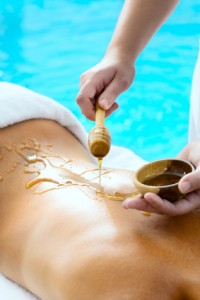 Relaxing honey bath.
Relaxing honey bath.
Put 2 oz. of honey in a glass with 5 drops of lavender oil. If the honey is too thick, heat it by placing the glass in warm water. Add 1 or 2 tbsp. of the honey-lavender mixture to you bathwater to help you relax and combat insomnia.
Honey as a dressing for wounds.
Applied externally, honey is useful for healing minor cuts and abrasions by drawing excess water form the tissues and reducing swelling. In addition, honey contains a germ-killing substance called inhibine, which helps prevent infections. Spread the honey directly on the wound and cover with a sterile bandage.
Help for hay fever.
Honey contains grains of pollen that, over time, may have a desensitizing effect, making it useful for the relief of allergies. Hay fever sufferers are advised to eat honey that has been harvested locally.
For relief of asthma, bronchitis and other respiratory ailments.
Honey is an outstanding household remedy for asthma and can be used in combination with various medicinal herbs. For relief of coughs and wheezing associated with bronchitis, whooping cough or other minor respiratory ailments, mix 1 tsp. of finely chopped fresh thyme in a little honey. Take the mixture orally as needed to soothe inflamed lungs and airways.
Stay healthy through cold winter’s days.
Newsletter #8. Fall 2009
Acupuncture for Headaches
 Headaches are extremely common. While everyone experiences an occasional headache, statistics show that 1 out of 6 people suffer from chronic headaches.
Headaches are extremely common. While everyone experiences an occasional headache, statistics show that 1 out of 6 people suffer from chronic headaches.
Acupuncture can effectively relieve headaches, as well as treat their underlying causes. In fact, headaches are one of the conditions most commonly seen in acupuncture clinics today. It can offer powerful relief without the side effects that prescription and over-the-counter drugs can cause.
Headaches that can be treated with acupuncture include migraines, tension headaches, headaches occurring around the menstrual cycle, sinus headaches and stress-related headaches.
How Acupuncture Treats Headaches
Many variables are looked at in order to properly diagnose and successfully treat headaches. Each individual is treated differently depending on their unique symptoms.
Some of the factors that will determine what acupuncture points and other treatment techniques are used include: what triggers the headaches; the location, frequency and intensity of the headaches; the quality of the pain; the time of day that they occur; what helps the headaches and what makes them worse.
Types of Headaches
When treating with acupuncture, headaches are often classified by their location. This is only a broad guideline which needs to be further refined and integrated into the treatment for each individual, but this shows meridians and patterns that affect each area of the head.
Top of Head: Liver Meridian (Liver Blood Deficiency, Liver Yang Rising)
Sides of Head: Gall-Bladder Meridian (Liver-Yang, Liver-Fire or Liver-Wind Rising)
One Side Only: Gall-Bladder Meridian (Liver-Yang or Liver-Fire Rising)
Temples: Gall-Bladder Meridian (Liver-Yang, Liver-Fire or Liver-Wind Rising)
Behind the Eyes: Liver Meridian (Liver Blood Deficiency, Liver Yang Rising)
Forehead: Stomach Meridian (Stomach Deficiency or Stomach-Heat)
Back of Head (Occipital): Bladder Meridian (Kidney Deficiency or Damp-Heat in the Bladder) or External Wind
Whole Head: Kidney-Essence Deficiency or External Wind
Acupuncture can significantly relieve headaches and is an important component to managing recurring headaches and migraines. If you have any questions, please call for a consultation.
Studies show that acupuncture can treat headaches.
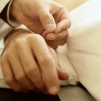 Two separate systematic reviews by Cochrane Researchers show that acupuncture is an effective treatment for prevention of headaches and migraines.
Two separate systematic reviews by Cochrane Researchers show that acupuncture is an effective treatment for prevention of headaches and migraines.
In each study, the researchers tried to establish whether acupuncture could reduce the occurrence of headaches. One study focused on mild to moderate but frequent “tension-type” headaches, whilst the other focused on more severe but less frequent headaches usually termed migraines. Together the two studies included 33 trials, involving a total of 6,736 patients.
Overall, following a course of at least eight weeks, patients treated with acupuncture suffered fewer headaches compared to those who were given only pain killers. In the migraine study, acupuncture was superior to proven prophylactic drug treatments.
In one specific study involving 270 patients, acupuncture cut tension headache rates almost in half. Researchers divided the patients who reported similarly severe tension headaches into three groups for the study. Over the project’s eight-week period, one group received traditional acupuncture, one received only minimal acupuncture (needles inserted at non-acupuncture points, and at only shallow levels), and the third group received no treatment.
Those receiving the traditional acupuncture reported headache rates of nearly half that of those who received no treatments, suffering 7 fewer days of headaches. The minimal acupuncture group suffered 6.6 fewer days, and the non-acupuncture group suffered 1.5 fewer days. When they received acupuncture after the main study period, the “no treatment” group also reported significantly fewer headache days.
The improvements continued for months after the treatments were concluded, rising slightly as time went on.
Sources:
British Medical Journal, July 2005
Acupuncture for tension-type headache.Cochrane Database of Systematic Reviews, Issue 1. Art. No.: CD007587 DOI: 10.1002/14651858.CD007587
Acupuncture for migraine prophylaxis. Cochrane Database of Systematic Reviews, 2009, Issue 1. Art.No.: CD001218 DOI: 10.1002/14651858.CD001218.pub2
British Medical Journal, July 2005
Acupuncture for tension-type headache.Cochrane Database of Systematic Reviews, Issue 1. Art. No.: CD007587 DOI: 10.1002/14651858.CD007587
Acupuncture for migraine prophylaxis. Cochrane Database of Systematic Reviews, 2009, Issue 1. Art.No.: CD001218 DOI: 10.1002/14651858.CD001218.pub2
7 Healthy Habits for Headache Suffereres.
- Diet- Eat regular meals at regular times to avoid your blood sugar from falling too quickly. Also, avoid foods and drinks that are known to trigger headache attacks including processed meats, aged cheese, alcohol, and foods and beverages that contain aspartame.
- Sleep- Maintain a regular sleeping schedule, including weekends and vacations.
- Stress- Stress is one of the most common headache and migraine triggers. Implement stress reduction techniques into your daily life.
- Exercise- Exercise stimulates the body to release endorphins, which are brain chemicals that improve mood and relieve stress, which are known headache triggers.
- Headache Diary- Keep a diary of when your headaches occur, along with any triggers, and share the information with your healthcare provider.
- See Your Healthcare Provider- Make an appointment with your healthcare provider to specifically discuss your headache.
- Be a Partner in Your Headache Care- Be informed, be a participant in your treatment and be an advocate for your headache care.
Between Chocolate and Cucumber
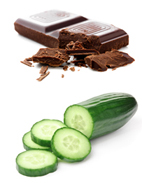 Not only food preferences can describe habits and traditions of a particular individual, but they can also tell about individual’s health. IF A PERSON UNSTOPABLY CRAVES FOR:
Not only food preferences can describe habits and traditions of a particular individual, but they can also tell about individual’s health. IF A PERSON UNSTOPABLY CRAVES FOR:
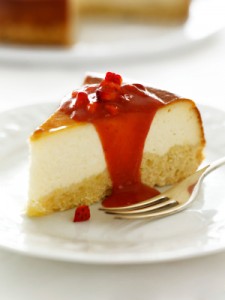 SWEET FOODS: If a person craves for sweets that could indicate nervous and mental strain. Glucose actively participates in producing stress hormone – the adrenaline, which is the main supplier of energy for the brain. Sugar is consumed faster during stressful periods and the body constantly requires more new sugar intakes. During these times, it’s not a sin to spoil yourself. Dark chocolate would be a great choice, and it’s better to restrict yourself from consuming pies and butter cakes which contain many heavy carbohydrates. But if the cravings for something sweet become intrusive over prolonged periods of time, you constantly are suffering from thirst and increased appetite and take abnormally large amount of bathroom brakes, these could be the signs of developing sugar diabetes. At this point, it wouldn’t hurt to check blood sugar levels and pay a visit to an endocrinologist.
SWEET FOODS: If a person craves for sweets that could indicate nervous and mental strain. Glucose actively participates in producing stress hormone – the adrenaline, which is the main supplier of energy for the brain. Sugar is consumed faster during stressful periods and the body constantly requires more new sugar intakes. During these times, it’s not a sin to spoil yourself. Dark chocolate would be a great choice, and it’s better to restrict yourself from consuming pies and butter cakes which contain many heavy carbohydrates. But if the cravings for something sweet become intrusive over prolonged periods of time, you constantly are suffering from thirst and increased appetite and take abnormally large amount of bathroom brakes, these could be the signs of developing sugar diabetes. At this point, it wouldn’t hurt to check blood sugar levels and pay a visit to an endocrinologist.
SPICY FOODS: Do you love Mexican or Thai cuisine? Does the food seem unflavored and insipid until you 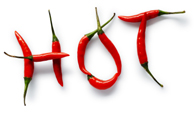 pour half a bottle of Tabasco sauce in it? These things could mean that you have a “lazy stomach” that slowly digests food and requires stimulus. And hot spices are exactly the things that stimulate the digestion processes. You can check your stomach condition by means of gastro copy. During bad lipid metabolism, individuals often desire spicy foods. Spicy foods contribute to reduction of fats and bad cholesterol while “cleaning up” the vessels. However they can also irritate gastric mucosa. It’s not recommended to eat a lot of chili or hot salsa on empty stomach.
pour half a bottle of Tabasco sauce in it? These things could mean that you have a “lazy stomach” that slowly digests food and requires stimulus. And hot spices are exactly the things that stimulate the digestion processes. You can check your stomach condition by means of gastro copy. During bad lipid metabolism, individuals often desire spicy foods. Spicy foods contribute to reduction of fats and bad cholesterol while “cleaning up” the vessels. However they can also irritate gastric mucosa. It’s not recommended to eat a lot of chili or hot salsa on empty stomach.
BITTER FOODS: Craving for bitter foods is the signal that the digestive system might be full of waste matter, or that a particular illness is not fully cured, or that there are toxins in the body. It might be helpful to take a few restful days or to go through some body cleansing procedures.
 SOUR FOODS: Craving for sour foods is sometimes a sign of gastritis with insufficient secretory function during which gastric juices have lowered acidity. During common colds and high body temperature, sour drinks like black tea with lemon, can help to alleviate symptoms and increase appetite.
SOUR FOODS: Craving for sour foods is sometimes a sign of gastritis with insufficient secretory function during which gastric juices have lowered acidity. During common colds and high body temperature, sour drinks like black tea with lemon, can help to alleviate symptoms and increase appetite.
SALTY FOODS: If all food constantly seems unsalted and you begin drooling over 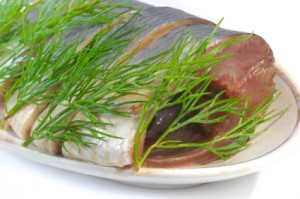 salted pickles and hearing, it could be a signal of inflammation, infection in your body, or failing immune system. Often enough these occur due to problems with the urogenital system like cystitis, prostatitis, or inflammation of adnexi of the uterus.
salted pickles and hearing, it could be a signal of inflammation, infection in your body, or failing immune system. Often enough these occur due to problems with the urogenital system like cystitis, prostatitis, or inflammation of adnexi of the uterus.
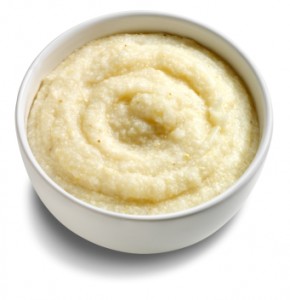 BLAND FOODS: The need for unflavored bland foods is often originating during gastritis or stomach ulcers with elevated acidity, during constipation, and problems with liver and gallbladder. Unflavored food usually purges and helps at lowering spastic pains and relaxes the stomach. If all the food seems bland and tasteless, you are constantly in a bad mood and tired, then it could mean depression. Lack of ability to taste flavor could sometimes indicate a brain-related illness.
BLAND FOODS: The need for unflavored bland foods is often originating during gastritis or stomach ulcers with elevated acidity, during constipation, and problems with liver and gallbladder. Unflavored food usually purges and helps at lowering spastic pains and relaxes the stomach. If all the food seems bland and tasteless, you are constantly in a bad mood and tired, then it could mean depression. Lack of ability to taste flavor could sometimes indicate a brain-related illness.
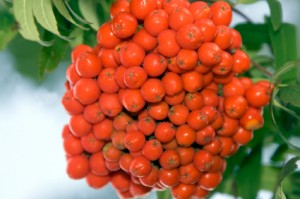 ASTRINGENT FOODS: If you suddenly want to eat a fruit like persimmon, it could mean that defenses of your body are at risk. Food products with distinct astringent taste contribute to the division of skin cells (help to heal scabs and cuts, improve face color). They help to stop the bleeding (for example during myomas) and get rid of mouth sputum during bronchopulmonary problems. But astringent food condenses blood which could be dangerous for persons with elevated coagulability (during varicosity, hypertension, and certain heart illnesses).
ASTRINGENT FOODS: If you suddenly want to eat a fruit like persimmon, it could mean that defenses of your body are at risk. Food products with distinct astringent taste contribute to the division of skin cells (help to heal scabs and cuts, improve face color). They help to stop the bleeding (for example during myomas) and get rid of mouth sputum during bronchopulmonary problems. But astringent food condenses blood which could be dangerous for persons with elevated coagulability (during varicosity, hypertension, and certain heart illnesses).
Newsletter # 7.Summer 2009
Good Night Beauty
A good night’s sleep is an essential part of your beauty regimen and does more for your good looks than the best balm or treatment. While you sleep, blood continuously replenishes your skin, giving it a rosy glow. A well-rested complexion is also less prone to breakouts. Of course, night time is also the right time to treat your body to some extra conditioning and moisture. Here are a few recipes to try that you can use right before you get into bed.
Nighttime lotion
This rich lotion is packed with oils and vitamins. Massage it into your body and face before going to bed at night and you’ll wake up with soft, smooth skin that looks and feels amazing. Make sure to remove and jewelry and wash your skin before applying it.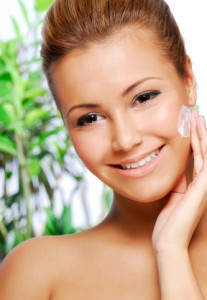
- ¼ tsp baking soda
- ½ cup distilled water
- 1 Tbls vitamin E oil
- 2 Tbls olive oil
- 1 Tbls avocado oil
- 1 tsp wheat germ oil
- 1 Tbls grated beeswax
In a glass container, dissolve baking soda in the water and set aside. In a small saucepan or microwave-safe dish, mix the oils and wax together and heat gently (use the stovetop or microwave) until wax is melted. Heat the soda-water mixture but do not boil and then pour it into a blender. Blend on slow speed, slowly adding the oil-wax mixture in a steady stream. Mix well and transfer to a heat-resistant container. Allow the mixture to cool. (The lotion will thicken as it cools.) Yield: 6 ounces
Lullaby massage oil
With lavender and chamomile in the mix, this massage oil Is the perfect cure for a bad case of insomnia. The almond oil conditions skin.
- 1 Tbls dried chamomile flowers
- ½ cup sweet almond oil
- 5 drops essential oil of lavender
Place chamomile flowers in a small saucepan and pour the almond oil over them. Gently warm the oil for a few minutes, but do not boil. Allow the oil to cool; then strain out the flowers. Add the lavender essential oil and pour into a clean bottle. To use: Slowly massage a small amount onto dry skin or tired muscles. Yield: 4 ounces
Relaxing lavender bath
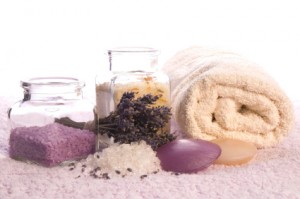 This is a perfect herbal bath to ease your mind and body after a full day. Along with lavender, it contains oatmeal and baking soda to soothe dry, sensitive skin. Substitute dried chamomile for the lavender in this recipe if you prefer.
This is a perfect herbal bath to ease your mind and body after a full day. Along with lavender, it contains oatmeal and baking soda to soothe dry, sensitive skin. Substitute dried chamomile for the lavender in this recipe if you prefer.
- 1 cup dried lavender flowers
- 2 cups oatmeal
- ½ cup baking soda
In a blender or food processor combine all ingredients and process until you have a smooth, fine powder. To use: Pour ½ cup into your bath as you fill the tub. Yield: 28 ounces.
Eye rest pillows
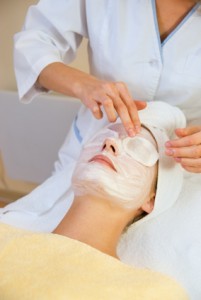 These pretty silk pillows are simple to make and offer an effective way to ease eye strain and relax at the end of the day. You can find flaxseeds at most grocery and natural food stores. If you can’t find silk fabric, try using old scarves.
These pretty silk pillows are simple to make and offer an effective way to ease eye strain and relax at the end of the day. You can find flaxseeds at most grocery and natural food stores. If you can’t find silk fabric, try using old scarves.
- 2 rectangle pieces of silky material, 5” x9”
- 1 cub flaxseeds
- 1 Tbls dried lavender
Stitch the material together to form a small sack, and fill it with flaxseeds and lavender. Stitch the remaining end close. To use: Lie down with the pillow over your eyes. To calm inflamed skin, cool the pillow by placing it in the refrigerator.
Evening nail oil
Massage this rich combination of natural oils onto your nails before going to bed to strengthen and condition them. Do this regularly and you’ll see improvements in a few short weeks – even with dry, cracked nails. Find liquid lecithin at your local natural food store.
- 1 Tbls olive oil
- 2 tsps liquid lecithin
- ¼ tsp vitamin E oil
Combine all ingredients and mix well. To use: Dab a small amount on your fingers and rub thoroughly into your nails. Yield: ½ ounce.
Tips for a Good Night’s Rest
Stick to a sleep schedule to keep your biological clock in sync.
Avoid late dinners.
Exercise at least four times a week, but avoid workouts close to bedtime.
Use your bedroom only for sleep, not for surfing the web or work.
Practice a sleep ritual like a warm bath, reading, or listening to music before going to bed.
Have a very restful sleep.
Simple Sciatica Exercises.
A large number of sciatica exercises are available to choose from, but if you are in significant pain, it is a good idea to stick with a simple, easy to implement plan. One or two exercises done frequently can be far more effective than struggling with a complex program of multiple exercises.
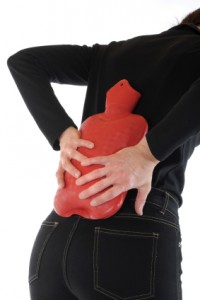 In order to determine which exercise will be of most benefit to you, it is necessary to try to figure out if you have true sciatica caused by a lumbar disc herniation, or if you have “piriformis syndrome”, which produces sciatica-like symptoms but is due to excessive contraction of a muscle in the buttock area.
In order to determine which exercise will be of most benefit to you, it is necessary to try to figure out if you have true sciatica caused by a lumbar disc herniation, or if you have “piriformis syndrome”, which produces sciatica-like symptoms but is due to excessive contraction of a muscle in the buttock area.
One simple way to tell the difference is to sit in a firm chair to do a couple of basic tests. In the sitting position, try straightening your knee on the painful side, so that your leg is parallel to the floor. If this increases your symptoms, chances are you have true sciatica related to a disc problem.
The second test used to differentiate between disc-related sciatica and piriformis syndrome begins by pulling your knee toward the same-side shoulder. Begin by first bringing the knee on the painful side toward the shoulder on the same side. Then release the leg slightly and pull the knee toward the opposite shoulder. If the symptoms increase more when you pull the knee toward the opposite shoulder than when you pulled it toward the same side shoulder, it is likely that you have piriformis syndrome. It should be noted that it is possible to have both true sciatica and piriformis syndrome at the same time.
Once you determine whether you have true sciatica or piriformis syndrome, or both, you can usually get considerable relief from just a single exercise for either condition (two exercises if you have both).
For true sciatica, most people will find relief through the basic McKenzie extension exercise (named for physical therapist Robin McKenzie).
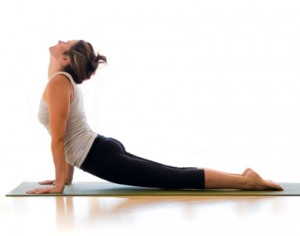 This exercise is performed by lying face down on a firm surface and then propping yourself up on your elbows, creating an increase in the curve of the lower back. Getting into this position may be painful at first, but within about 30 seconds, most people will notice a decrease in the severity or the range of the sciatica, or both. A positive sign is when the symptoms furthest from the spine decrease.
This exercise is performed by lying face down on a firm surface and then propping yourself up on your elbows, creating an increase in the curve of the lower back. Getting into this position may be painful at first, but within about 30 seconds, most people will notice a decrease in the severity or the range of the sciatica, or both. A positive sign is when the symptoms furthest from the spine decrease.
As long as the symptoms are decreasing furthest from the spine, the exercise described is beneficial, even if the symptoms closer to the spine seem to increase at first (they’ll usually improve with repetition of the exercise over time). I suggest you remain in this position for a couple of minutes and then take a break by either just lying flat, or by getting up and walking for at least a few minutes in between the exercise repetitions in order to avoid developing a lot of tightness in the low back muscles.
For piriformis syndrome, you can do a simple stretch of the piriformis muscle. I recommend you do this by lying on your back, pulling your knee on the painful side toward the same side shoulder for a few seconds, then partially releasing the leg and then pulling your knee toward the opposite shoulder. Hold this stretch for about 10 seconds at a time then carefully release your leg for a few seconds before repeating the stretch.
Regardless of whether you are using the extension exercise or the piriformis stretching, or both, these sciatica exercises are most effective when done repeatedly – up to several times each day for as long as you are having a lot of pain.
When the symptoms have subsided, it is extremely important to learn what sciatica exercises you can do to prevent the symptoms from returning in the future. Don’t be fooled! Just because the symptoms go away, it doesn’t mean that everything is back to normal. All too often, sciatica sufferers go from one episode of pain to the next, with episodes becoming more severe and more frequent over time, because they fail to manage the problem correctly so you can avoid the common problem of developing chronic pain and disability.
If you have questions or need help with back pain, please, make a call and schedule your appointment with Dr. Irina V.Zasimova.